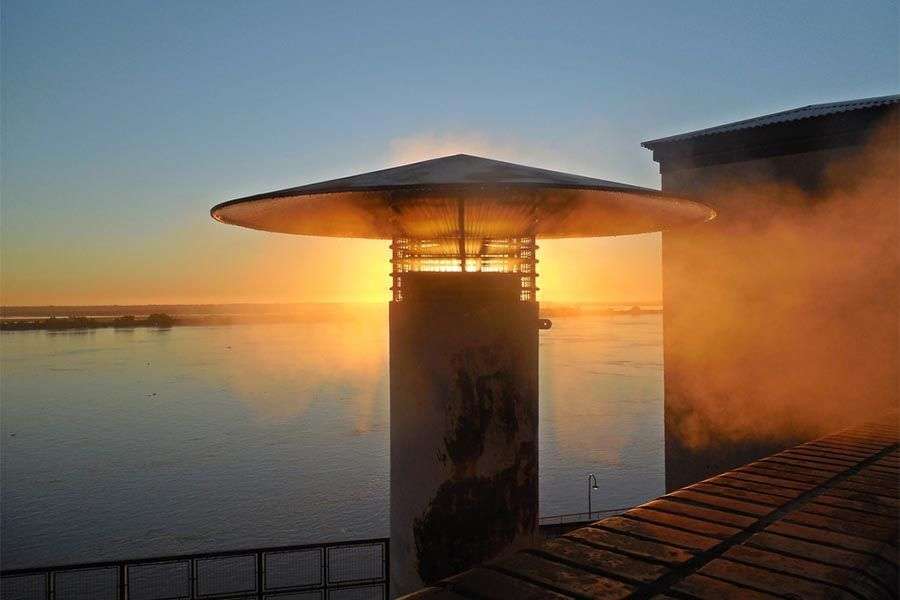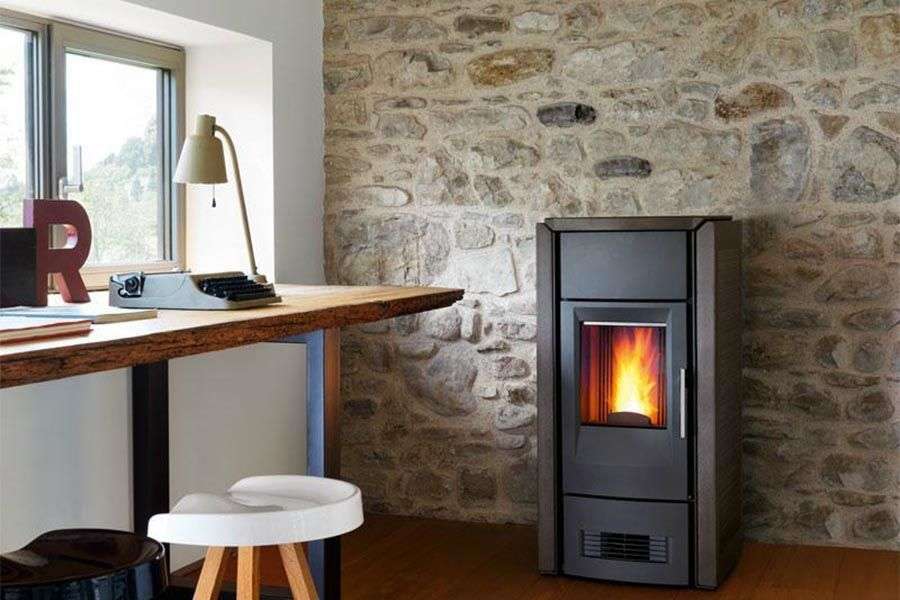
Everyone likes to enjoy an individual house with a garden and independence. Many people are fortunate enough to live in this type of housing, but many others have to settle for living in apartment buildings. There’s nothing wrong with this type of home, as there are some impressive apartments that can rival villas or detached houses. Except maybe for one thing: when winter comes, you can’t feel the warmth of a good wood-burning fireplace. Or perhaps you can? Can you install a fireplace in an apartment? Let’s see if you can make this dream come true.
Rejoice, because even if you live in an apartment, you can enjoy the cozy warmth that a traditional fireplace provides. You just need to consider some aspects that require your attention, such as the smoke outlet and other essential elements for your wood stove to function safely. You also need certain permits to avoid future problems.
Contenidos:
Steps to install a wood-burning fireplace in your apartment
The first thing you need is space to place your fireplace. Keep in mind that you’ll need a good smoke outlet, preferably straight, although it can also be accommodated with a bent outlet, as long as there’s enough angle.
If your apartment building is old, there may already be a smoke outlet, making this step easier. Otherwise, as is the case with new buildings, you’ll have to look for an alternative.
The alternative is to run the pipe up the exterior of the building. This may seem easy, but it’s not so simple, especially if you don’t live on the top floor. Keep in mind that not everyone accepts a pipe passing through their wall. Plus, you need permission from the community, as the installation of a wood-burning fireplace modifies common elements. If you do it through the courtyard, you’ll probably encounter fewer obstacles.
Furthermore, you need to comply with the regulations in order to have your fireplace. That’s why, before considering installing the fireplace, check the rules that regulate this in your area.
The smoke outlet is the main obstacle. Other than that, the installation of this fireplace doesn’t have any more inconveniences. You can do it just like in any other place.
Alternatives to wood-burning fireplaces in an apartment
If you want to enjoy the warmth of home in your apartment with a rustic style, you can also consider alternatives such as pellet stoves.
At HotFireDoor, we have talked about them before. But make it clear that if you want a wood-burning fireplace, even if you live in a residential building, you can install one as long as you have permission from the community and it complies with the current regulations. You don’t need to move to the countryside or live in a detached house to see how the firewood burns.
Spanish Regulations on the Construction and Installation of Chimneys
In Spain, the construction and installation of chimneys are governed by various laws, regulations, and technical standards. These may vary among different autonomous communities and municipalities. Some key regulations to consider include:
- Technical Building Code (CTE): This set of technical standards establishes the basic requirements for quality and safety in building construction, including chimneys. The CTE covers aspects such as energy efficiency, structural safety, and fire protection.
- Regulation of Thermal Installations in Buildings (RITE): The RITE sets the requirements for the design, installation, maintenance, and use of heating, air conditioning, and domestic hot water systems in buildings. These requirements also apply to chimneys and stoves used as heating systems.
- Local Regulations: Autonomous communities and municipalities may have their own specific regulations related to the construction and installation of chimneys, such as height limitations, location restrictions, and regulations on pollutant emissions.
- UNE Standards: The UNE standards are technical standards developed by the Spanish Association for Standardization (AENOR). These standards provide guidelines on how to design, install, and maintain chimneys and smoke evacuation systems in accordance with good practices and safety requirements.


